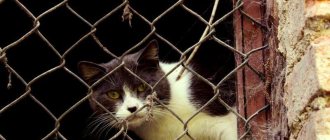The killing of an animal alone cannot serve as a sign of a crime, otherwise all cases of slaughter of livestock or poultry would have to be included in it. Which explains the number of clauses present in Art. 245 of the Criminal Code on cruelty committed against animals. The absence of at least one of the conditions leads to the impossibility of punishing the violator. As a result, many cases of abuse of pets remain without retribution. This circumstance indicates the shortcomings of the existing regulatory act.
Corpus delicti
Inhumane treatment of animals is qualified under Article 245 of the Criminal Code.
Object of the unlawful act
The crime violates the moral principles of society, which preach humane treatment of living beings. It encroaches on the mental health of the younger generation and affects the worst aspects of the personality, awakening a pathological tendency to violence. Unlawful actions directed against an animal that has an owner also affect property rights.
Subject of violation
Criminal liability is provided for cruel treatment not only of domestic animals, but also of wild animals.
Objective side
As the article points out, cruelty to animals will only be recognized as a crime if each of the following conditions is present:
- The action directed against the animal was accompanied by cruelty.
- Beatings and bullying led to one of the consequences:
- death of an animal;
- injuring him.
- hooligan urges;
Abusive relationship concept
Cruelty to animals can be expressed:
- torture;
- beating;
- strangulation;
- conducting experiments;
- deprivation of food, water;
- placement in unbearable conditions;
- restriction of movement;
- other actions.
Subject of the crime
Criminal liability for cruelty to animals threatens legally capable persons who have reached the age of sixteen.
Subjective side
The crime is characterized by the presence of:
- Direct intention, when the perpetrator is aware of the actions being performed and desires the death of the animal or injury to it.
- Indirect intent, in which the goal is to torture the animal itself, and the consequences of such actions are not of interest to the offender.
more information about direct and indirect intent in criminal law.
Another comment on Art. 245 of the Criminal Code of the Russian Federation
1. The subject of the crime is domestic and wild animals (mammals and birds).
2. The objective side of the crime includes the following features: a) an act in the form of cruelty to animals, i.e. beating them, using them for non-scientific experiments, using them in various kinds of fights, hunting in inhumane ways with the use of mutilating instruments and means; b) a consequence in the form of death or injury to the animal; c) the causal relationship between the act and the consequence.
3. Mandatory alternative elements of a crime are: a) hooligan motives - this is the desire of the perpetrator to demonstrate disregard for generally accepted standards of morality and humane treatment of animals; b) selfish motives are obtaining material benefits (winning in an animal fight, using the fur of domestic animals to make hats); c) the use of sadistic methods is a method of committing a crime when special suffering is caused to an animal (skinning a living animal, setting it on fire); d) committing an act in the presence of minors, i.e. children under 14 years of age.
Responsibility for cruelty committed against animals
The Code of Administrative Offenses of the Russian Federation does not provide for punishment for savage attitude towards representatives of the animal world. However, the criminal can be prosecuted:
- For damaging someone else's property.
- According to the regional Code of Administrative Offences.
- According to Art. 245 of the Criminal Code.
Damage to someone else's property
Article 137 of the Civil Code of the Russian Federation presupposes the application to animals of the general rules that apply to property. Thus, causing harm to someone else's animal can be classified as intentional destruction or damage to property. Depending on the amount of damage caused, the perpetrator is brought to administrative or criminal liability. This method can be resorted to if the crime cannot be qualified under Art. 245 of the Criminal Code of the Russian Federation for cruelty to animals.
Administrative punishment
Additionally,
Article 245 of the Criminal Code of the Russian Federation classifies only those crimes that were committed in the presence of minors or using sadistic methods. As an example when these conditions were not met, we can cite the activities of dog hunters who do not torture animals, but poison them with food containing poison. In this case, the court, along with Article 245, may also apply related ones, in particular Art. 167 of the Criminal Code (deliberate destruction or damage to property) and Article 213 of the Criminal Code (hooliganism).
If the damage is considered insignificant, an amount of 300 to 500 rubles is collected from the violator. (Article 7.17 of the Administrative Code). And, since a pet cannot be considered a valuable property, the punishment for its tormentor can be considered almost symbolic.
Criminal liability
Significant damage caused to someone else's property is punishable (Article 167 of the Criminal Code):
- A fine in the amount of:
- up to 40,000 rubles;
- earnings received in 3 months.
If the act was committed out of hooligan motives, the perpetrator is sentenced to:
- forced labor for a period of up to 5 years;
- imprisonment for up to 5 years.
More information about property damage in criminal law can be found in the article https://lexconsult.online/6613-otvetstvennost-za-povrezhdenie-imushhestva.
Find out from the video about the punishment provided for in Article 245 of the Criminal Code of the Russian Federation
Regional regulations
The local Code of Administrative Offenses of some cities of the Russian Federation provides for punishment for cruelty towards our smaller brothers.
Moscow
As prescribed by the local law on cruelty to animals, the violator pays a fine of 4,000 to 5,000 rubles. for committing actions that led to the death or injury of an animal.
Saint Petersburg
Persons involved in the death of an animal resulting from the following actions are brought to administrative liability:
- transportation in conditions harmful to health;
- intentional deprivation of food and water;
- savage experiment.
Violation is punishable by a fine of up to:
- 5000 rub. for FL.
- 100,000 rub. for YUL.
It is worth noting: after witnessing the abuse of an animal, you should not organize lynching of the flayer. It is necessary to contact law enforcement authorities by writing a corresponding statement. Evidence of cruelty to animals is .
Criminal Code
Art. 245 of the Criminal Code contains 2 points.
Paragraph 1
The perpetrator is subject to:
- A fine in the amount of:
- up to 80,000 rub.;
- salaries for 6 months or less.
Point 2
The punishment becomes more severe if the crime is committed:
- several persons;
- by prior agreement;
- organized group.
In this case, the following are assigned:
- Fine in the amount:
- RUB 100,000–300,000;
- income for 1–2 years
It is worth noting: actual sentences for cruelty to animals in Russia are rather a rare exception than the rule. Most cases that do end up in court result in fines or probation. Find out what probation means.
Criminal liability under Article 245 of the Criminal Code of the Russian Federation
Article 245, which provides criminal penalties for cruelty to animals, has not undergone major changes for a very long time. Perhaps only twice - since the adoption of the last code - has the punishment been (slightly) increased under this article.
Article 245 has 2 parts:
- The first involves bringing one person to justice, the second - a group of people. The first provides for punishment in the form of a fine of up to 80,000 rubles or correctional labor for up to 1 year, or restriction of freedom for up to 1 year. In 2010, 180 hours of compulsory labor were added to the list of punishments for this part, which in 2011 “turned” into 360 hours.
- For the second part, the punishment is, naturally, more severe. A fine of 300,000 rubles or imprisonment for up to 2 years. Also in 2010, mandatory work was added (up to 240 hours).
Important: liability under Article 245 is provided only in cases of injury or death of an animal/animals and in the mandatory presence of at least one of the following signs:
- hooligan motive;
- use of sadistic methods;
- committing a crime in front of minors;
- selfish goals.
It is obvious that the current law is imperfect, since flayers can be prosecuted under the existing article only in cases of injury or death of animals.
Example: an adult flayer Ivanov, in front of young schoolchildren, slowly drowned a cat in a bucket, periodically beating the animal for scratching. This subhuman can only be judged by Article 245 if the cat dies, unable to withstand the abuse. If, with the last of his strength, the unfortunate animal breaks free and runs away, the sadist will remain unpunished.
Situations where animal torturers escape even a meager punishment are not uncommon. And it is precisely this state of affairs that prompted animal rights activists, ordinary people and concerned government officials to introduce draft amendments to the current Criminal Code in order to toughen penalties under Article 245 and supplement its composition with other, no less terrible than murder and mutilation, illegal acts against animals.
Possible changes in legislation
The article of the Criminal Code of the Russian Federation on cruelty to animals in its current form is not satisfactory from the point of view of animal defenders, representatives of A Just Russia and other government officials. The President of the Russian Federation also supports the initiative to change legislation towards tougher punishment.
The corresponding bill, developed by State Duma deputy O. Lebedev, was proposed back in 2011. However, its approval was prevented by an incredible number of amendments and comments, exceeding 2000. Consideration of proposals and introduction of amendments took quite a long time and continues to this day.
A real case from judicial practice is the punishment of flayers. Details - in the video
Cruelty to animals: administrative responsibility
For example, for cruelty to an animal, a citizen may face a fine of 5 thousand rubles. up to 15 thousand rubles..
However, the Responsible Animal Care Act defines cruelty as:
- cases where the owner refuses to keep a pet if this causes harm to the latter’s health;
- failure by the owner to provide assistance to an animal in a life-threatening or health-threatening condition;
- torturing an animal, including by hunger, thirst or beating.
Practical examples
The trespassers used neighbors' cats as shooting targets, causing them various injuries. The elements of the crime are obvious, so the owner of the cats has the right to contact the police. However, the neighbors were not caught by her at the time of committing malicious acts, which requires an investigation and identification of the perpetrators.
A village resident had been observing the misbehavior of a teenager throwing stones and shooting an air pistol at neighbors' cats for some time. In the presence of injuries, wounds and the expected death of animals, which is indicated by a decrease in their numbers. In the absence of other eyewitnesses to what is happening, it is advisable to record the teenager’s actions on video, and then provide the evidence obtained to the police. Due to his age, the violator will not be held accountable, but may be registered with the PDN.
Want more information? Ask questions in the comments to the article








